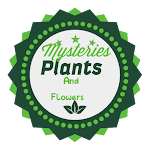Embark on a journey through the fascinating world of ginseng, where ancient traditions meet modern wellness. From the misty mountains of Asia to the serene landscapes of North America, this unassuming root has captured hearts and minds, earning its place as a symbol of vitality, longevity, and natural well-being. Join us as we unearth the secrets, history, and potent allure of the ginseng plant – a tonic for both body and soul.
So what are the notable facts about this plant?
1. Genus Panax:Ginseng belongs to the genus Panax, which is derived from the Greek words "pan" (all) and "axos" (cure), reflecting its traditional medicinal uses.
2. Varieties:
There are several species of ginseng, with the most common being Panax ginseng (Asian or Korean ginseng) and Panax quinquefolius (American ginseng).
3. Adaptogen:
Ginseng is classified as an adaptogen, believed to help the body adapt to stress and maintain balance.
4. Roots:
The plant's root is the most valued part, often used in traditional medicine and herbal supplements.
5. Active Compounds:
Ginsenosides are the primary active compounds in ginseng, contributing to its medicinal properties.
6. Traditional Medicine:
Ginseng has a long history in traditional Chinese medicine, where it's used for energy, vitality, and longevity.
7. Cultivation:
Ginseng requires specific conditions for growth, including cool climates and well-drained soil with high organic content.
8. Slow Growth:
Ginseng plants grow slowly, taking several years to reach maturity, with older roots often considered more potent.
9. Harvesting:
The root is typically harvested after 4–6 years of growth, but some varieties may be cultivated for over a decade before harvest.
10. Habitat:
Wild ginseng is found in Eastern Asia and North America, but over-harvesting has led to conservation concerns.
11. Cultural Symbolism:
Ginseng is a symbol of health, strength, and longevity in various Asian cultures.
12. Flowers and Berries:
While the roots are most sought after, ginseng plants also produce small clusters of greenish-white flowers and red berries.
13. Taste:
The roots have a slightly bitter taste, often described as earthy or woody.
14. Stimulant:
Ginseng is often used as a natural stimulant to combat fatigue and improve physical and mental performance.
15. Anti-Inflammatory Properties:
Some studies suggest that ginsenosides may have anti-inflammatory effects, potentially benefiting various health conditions.
16. Potential Anticancer Properties:
Research has explored ginseng's potential in cancer prevention and treatment, though more studies are needed.
17. Culinary Use:
Ginseng is occasionally used in culinary dishes, and the young leaves can be consumed.
18. Interaction with Medications:
Ginseng can interact with certain medications, and individuals on medication should consult with a healthcare professional before using ginseng supplements.A
s we bid farewell to the captivating realm of ginseng, let its essence linger on your palate like a sweet memory. Just as the roots delve deep into the earth, ginseng's legacy reaches into the annals of holistic health. May the whispers of its storied past and the promise of well-being continue to tantalize your senses. Like a lingering taste that leaves you craving more, may the spirit of ginseng accompany you on your journey to a healthier, more vibrant life. Cheers to the ancient charm and timeless allure of this extraordinary botanical treasure.




